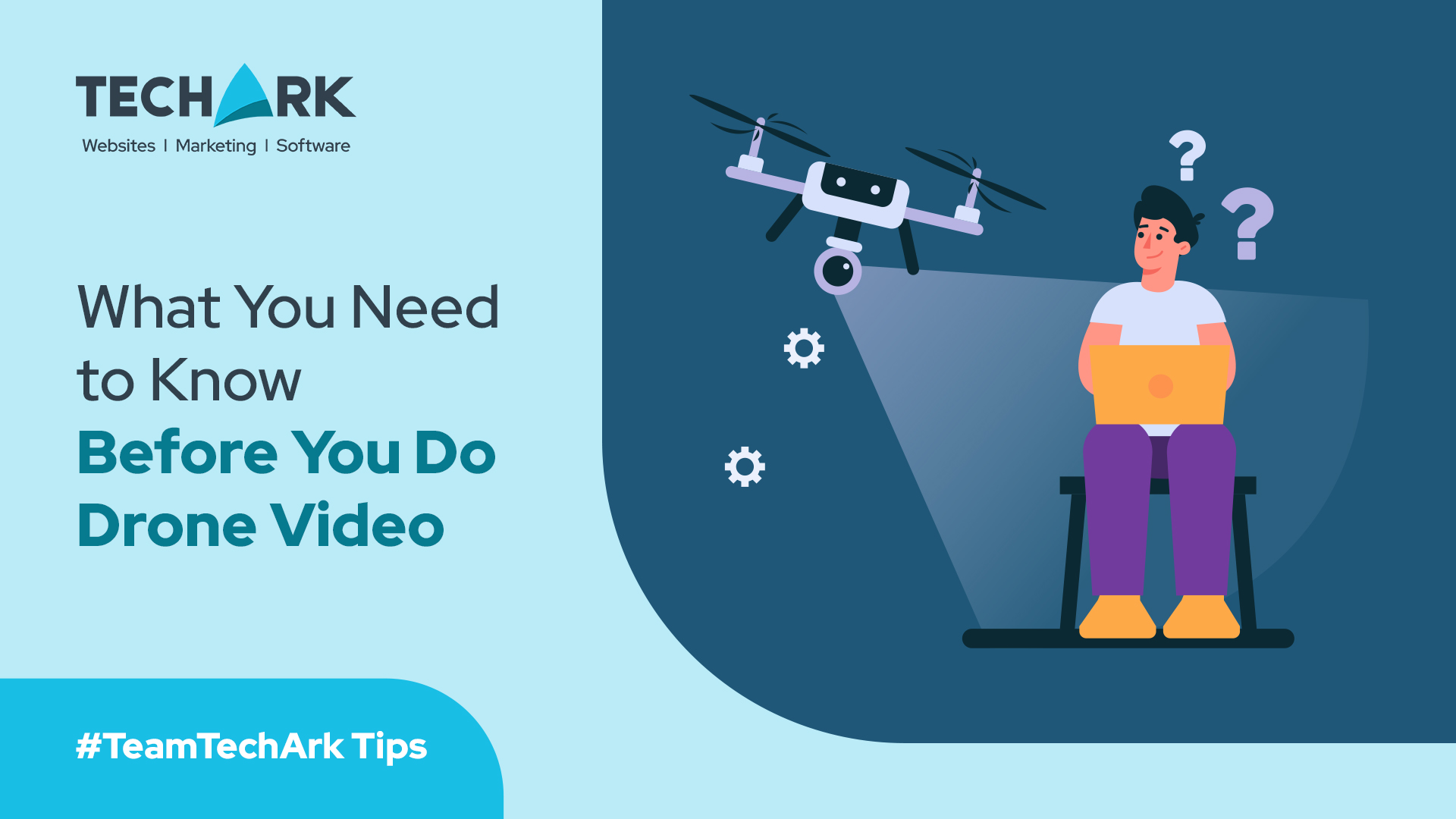Contact Us
Send Us a Message
Need expertise and innovation on your project? Our team can help.
Drone videography is a hot trend, especially for events – the footage is awesome and provides quality material and perspectives that were out of reach for most businesses unless you used really large, expensive equipment.
But did you know that there are some pretty important drone safety regulations that need to be followed? Matt Jefferson of TechArk’s team shares,
“Businesses on a budget may be tempted to hire a friend or family member who has a drone to shoot their video. What they don’t know is that they can get in a lot of trouble paying someone who doesn’t have a drone photography license. There are some hefty fines for drone operators who get caught flying without the right credentials.”
Table of Contents
Do You Know The FAA Regulates Drone Photography?
Anyone who wishes to operate a drone professionally needs to have a Part 107 drone photography license. In addition, if the drone is being used to capture footage of large events, a waiver from the FAA is also required.
What The Drone Photography License Covers
According to Matt Jefferson of TechArk:
“A lot of people shooting drone video today don’t even know that you have to have a Part 107 Remote Pilot Certificate license. To become certified, I had to apply and take a comprehensive test that includes drone safety laws, radio frequencies, airport landing and taking off.”
Exceptions to The Rules: When to Request an FAA Waiver
The Federal Aviation Administration (FAA) waiver for drones, officially known as the FAA Part 107 Waiver, allows drone operators to deviate from certain regulations outlined in the FAA’s Part 107 rules. These rules govern the operation of small Unmanned Aircraft Systems (UAS) for commercial purposes in the United States.
The waiver process is designed to enable operators to conduct drone operations that are otherwise prohibited under standard regulations, provided they can demonstrate that the operation can be conducted safely.
Here are Some of The Common Aspects That The FAA Waiver Can Cover:
- Operation from a Moving Vehicle or Aircraft: Normally, drones cannot be operated from a moving vehicle or aircraft. A waiver can allow this if it can be shown that it will not endanger people or property.
- Night Operations: Part 107 rules prohibit flying drones at night without special permission. A waiver can permit night operations if the operator can demonstrate that it can be done safely, often requiring additional lighting on the drone.
- Operations Over People: Typically, drones cannot be flown over people who are not directly participating in the operation, under a covered structure, or inside a stationary vehicle. A waiver can allow for such operations if safety measures are in place.
- Beyond Visual Line of Sight (BVLOS): Part 107 requires that the drone must always be within the visual line of sight of the operator or a visual observer. A waiver can permit operations beyond the visual line of sight if the operator can show that it can be done safely through technological means or other methods.
- Operating Multiple Drones: Generally, one operator can only control one drone at a time. A waiver can allow a single operator to control multiple drones simultaneously if it can be demonstrated that it can be managed safely.
- Altitude Restrictions: Part 107 limits drones to a maximum altitude of 400 feet above ground level. A waiver can allow for higher altitudes if it can be shown that it won’t interfere with manned aircraft and can be conducted safely.
- Operation in Certain Airspace: Drones are restricted from operating in certain classes of airspace without authorization. A waiver can allow operations in these areas with appropriate coordination and safety measures.
To obtain a waiver, operators must submit a detailed application to the FAA, explaining the nature of the proposed operation, the specific regulations from which they seek relief, and how they intend to ensure drone safety guidelines are covered. The FAA reviews these applications on a case-by-case basis, often requiring detailed safety assessments and possibly additional training or equipment for drone operations.
Don’t Forget Insurance
Risk management is important whenever you hire a vendor to perform a job that could cause damage or injury.
Your business could be held liable for the actions of a drone operator if things go wrong and cause an accident. So to protect your business and professional reputation, it’s important to hire a partner who is properly insured.
Ask your drone operator about their insurance coverage before you hire them. Our industry offers many options that make it affordable and reasonable for drone operators to have coverage. It could be as simple as an application. Jefferson shares, “I have an app which provides you insurance for the time that you’re flying so you have control over the cost of coverage.”
Ready to Get Great Drone Footage for Your Next Marketing Project?
Drone videography offers exciting possibilities for capturing stunning visuals and creating engaging content. By following the drone safety guidelines, hiring qualified drone operators (like TechArk), and ensuring proper insurance, you can focus on making your event unforgettable and your marketing impactful.
So, are you ready to take your marketing projects to the skies?


